|
Dornier Do 17 Z
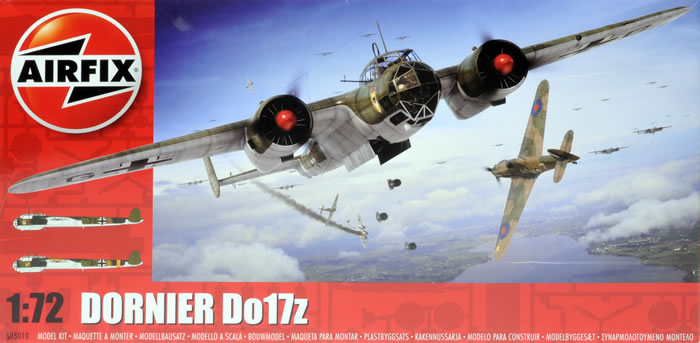
Airfix, 1/72 scale
S u m m a r y : |
Catalogue Number: |
Airfix Kit No. A05010 - Dornier Do 17 Z |
Scale: |
1/72 |
Contents & Media |
160 grey and 10 clear styrene parts, with decals for two colour schemes. |
Price: |
Available online from:
and numerous other stockists worldwide. |
Review Type: |
First Look |
Advantages: |
The best 1/72 Do 17 Z - Accurate, refined, superbly detailed, with plenty of construction options, and excellent decals; all for a great price. |
Disadvantages: |
No ventral antennae and no swastika decals. |
Conclusions: |
Finally, after a 47 year wait, we have a worthy Do 17 Z kit in The One True Scale! The need was so dire that most would have been happy with a kit half as good as this one so long as it was accurate.
As things stand, Airfix have raised the bar in many ways with the level of internal detail provided, not just in the cockpit, but within the bomb-bay, wheel-wells and engine cowls too. None of the internal detail provided is superfluous; I just wish more kit companies would attain the standard Airfix have demonstrated here.
Most important is the overall external appearance, and to my eyes Airfix have nailed it shape-wise. I think they have done an admirable job capturing the DO 17 Z’s rather elegant lines.
Also to their credit, Airfix have catered for an easily achieved in-flight option with specific parts for closed wheel and bomb-bay doors, plus of course some nicely rendered crew figures. This said; I wager that most models will be finished landed, with open bomb-doors, drooped flaps, open crew hatch, and perhaps displaced control surfaces.
Surface detail is quite acceptable, but remains the area Airfix have the greatest opportunity to improve in if they are to match the more refined levels achieved by some competitors. (To be fair, they essentially equal Revel’s and beat Italeri’s latest offerings in this regard, which after all are the two companies I suspect Airfix sees as its most direct rivals).
The kit should build well I think, but it will need the odd trim and slick of filler here and there, so don’t expect Tamiya levels of precision.
This is a superb effort by Airfix, it is accurate, refined, very detailed, with plenty of construction options, and excellent decals; all for a great price. When it comes to overall package value this kit, like many of Airfix’s recent releases, is hard to beat. ICM have a real challenge to equal or better this kit with their newly announced Do 17 Z tooling.
I cannot recommend this kit highly enough, nor wait for Airfix’s new-tool Whitley and Shackeltons, plus the other 1/72 kits announced recently. |
Reviewed by Mark Davies

Airfix's 1/72 Hurricane Mk.I Fabric Wing is available online from Squadron.com
Background
During the early years of the Second World War the Dornier Do17 was one of the Luftwaffe’s most important medium bombers. Developed during the early 1930s, first as a mail plane then as a reconnaissance bomber, the Dornier was nicknamed ‘the flying pencil’, due to its very thin tapering fuselage. While early versions used inline engines, the iconic and most widely used Z variant used Bramo radial engines, and featured a re-designed cockpit area, with the intention of providing more space and defensive capabilities for the crew.
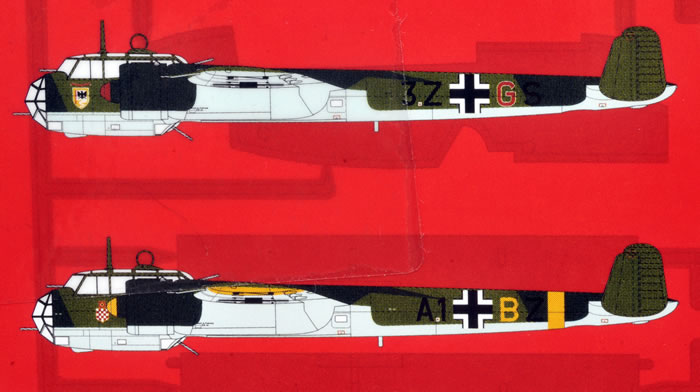
However, this was not wholly successful; its small crew area and lack of power operated turrets making it easy prey for Allied fighters. Of all the German medium bombers used in the Battle of Britain the Dornier was the slowest and therefore most vulnerable and the battle proved to be the aircrafts’ swansong over Western Europe, with the aircraft seeing only limited use in the later theatres of the war, before being phased out altogether by mid-1942. The Dornier became a symbol of the Blitzkrieg, but its vulnerability put paid to any chance of longevity of service.
Source: airfix.com
A much more detailed history covering the Do 17’s development, service and differences between variants can be found here at Wikipedia.
Previous 1/72 scale Dornier Do 17 Z Kits
That we have waited until now for a modern Do 17 Z kit in the One True Scale seems incredible, given the popularity of WW2 Luftwaffe subjects, and the Z’s significance to early war campaigns (not least the Battle of Britain) as the most-produced Do 17 variant. Oddly enough, earlier versions of the Do 17 have been quite well catered for, with Airfix releasing a generally very nice kit of the Do 17E/F in 1972 (re-boxed by MPC, Bilek and SK Model), and more recently RS Models have released very good limited run kits covering the Do 17E,F,K,M & P.
Until now only three Do 17 Z kits have been on offer. Monogram’s from 1966, re-boxed by Hasegawa and Revell; Frog’s from 1968, re-boxed by Tsukuda Hobby, Revell and Matchbox (under Revell); and probably least well known is Lindberg’s release of 1967. All three are very much kits of their time; with sparse cockpit detail, basic to appalling engines, yet fairly refined raised panel lines.
Of the three, Frog’s is generally regarded as being the most accurate; although it is let down by blunt wing leading edges, a too rounded ventral fuselage cross-section, and engines recessed too far back in their cowls; to mention its main failings. The Monogram kit at first glance looks nicer, but the wing chord is a scale 24” over-sized which makes the wing look like all wrong, and causes the model to be over-length by a similar amount. Its engines, almost perversely, are too far forward in the cowls, and join to overly bulbous nacelles. Conventional wisdom has been that the best Do 17 Z will result from a kit-bashed blend of the two brands.
I have not found any really useful reviews of the Lindberg kit, and have never seen one in the plastic. Images of the finished model suggest it to be a rather simplified offering, whose shape looks to me like it is based on a 1940s aircraft recognition drawing. I feel safe in assuming it is the worst of the three 1960s kits.
A glimmer of hope appeared in 2007 with ICM’s release of their Do 215B-4. The Do 215 was an export version of the Do 17 Z, with various engine fits. ICM’s kit featured inline engines, but offered a basis for kit-bashed adaption by adding radials to build a more modern Do 17 Z model.
I like ICM kits. They offer very good detail levels and several of their releases feature some of the most realistic surface treatment to be found in any scale (their SB-2, PO-2, I-153, Ki-27 and He 70 kits spring to mind here). Sadly, their Do 215 kit was let down by all sorts of poor fit issues, to the point that it has garnered an appallingly bad reputation. I am sure I am not alone in hoping that ICM’s recently announced new-tool 1/72 Do 17 Z is indeed 100% newly tooled, and has nothing in common with their earlier Do 215.
It seems a safe bet then that Airfix could not fail to improve on what has gone before after almost a half-century. Therefore, until we see ICM’s “new tool” Do 17 Z, Airfix’s kit must surely assume the mantle of best 1/72 Do 17 Z. But just how good is it?
Contents
The kit comes in a top-opening box with attractive artwork. There is no wasted space inside, with four grey sprues are enclosed in a single heat-sealed plastic bag and the clear sprue further protected in their own smaller bag. The decals, although protected by stiff tissue paper, are loose along with the instructions.
All sprues have acceptably thin attachment points and are crisply moulded with some fairly fine parts. I noticed slight sink marks on vertical tailfins, but these can be easily remedied. Ejector pin marks are thoughtfully placed, and the few that intrude into the cockpit interior will be hidden by additional detail fixed over them.
I made a point of checking the quality of clear parts as this has been an issue on some recent new tool Airfix kits (e.g. 1/72 EE Lightning & 1/24 Typhoon). I am pleased to report that my sample’s appeared to be perfect; being very clear, without flow marks, and with crisp framing. My overall impression upon viewing the contents was very positive indeed.
The multi-lingual instructions are an A4 booklet of eight pages. There is no parts map, but the well-drawn diagrams are very clear and easy to follow; these being CAD-based monochrome drawings with red tinting to highlight the parts positioned in each previous assembly stage.
The painting and markings guide is in colour with four views per subject. Colours are described using RLM or generic names where applicable, with paint codes that correspond to the Humbrol range. Whilst not a major issue, the dark upper-side colours and fairly small size of the drawings make it quite difficult to use panel lines as reference points for splinter demarcation. In this case a lightly shaded monochrome drawing would perhaps be of more use.
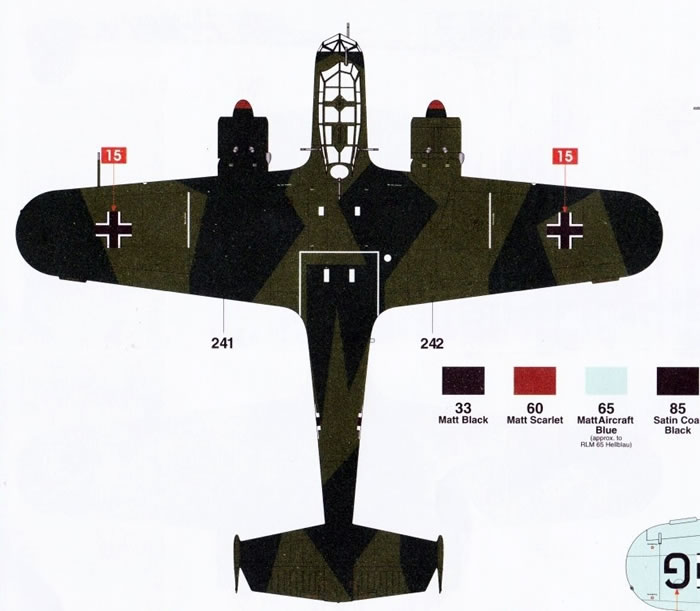
The decals are superbly-well printed by Cartograf. My only, and usual criticism, is the failure to provide swastikas (Airfix never have). Airfix have an excuse for this, as acknowledged in my “First Look” at their new-tool Fw 190A-8/F-8. However, I feel the excuse lacks credibility when other European kit companies, some of whose countries experienced NAZI occupation, provide these national insignia for historically correct models.
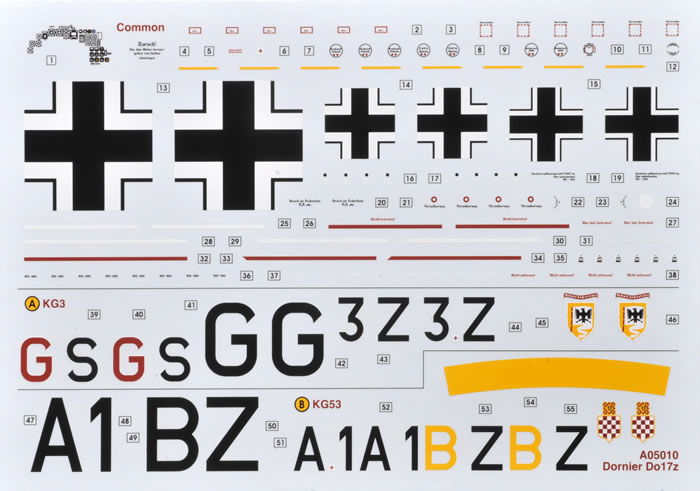
I doubt Airfix’s policy will change, and I know my opinion of it will not! Despite this, I am happy to admit that Airfix remains one of my all-time favourite brands.
The Kit
The first question many ask about each new Airfix release is how deep are the panel lines? Well in this case they are quite acceptable. I think perhaps they look more prominent than they are in photographs as they are square rather than v-cut, which results in a stronger shadow being cast. They remind me a little of Hasegawa’s He 111 kit, although the Do 17 Z’s are a little more refined. The rib detail on the fabric covered control surfaces is quite nicely done, although it is a little over pronounced probably in order to be noticeable, as strictly scale rib tapes would barely show.
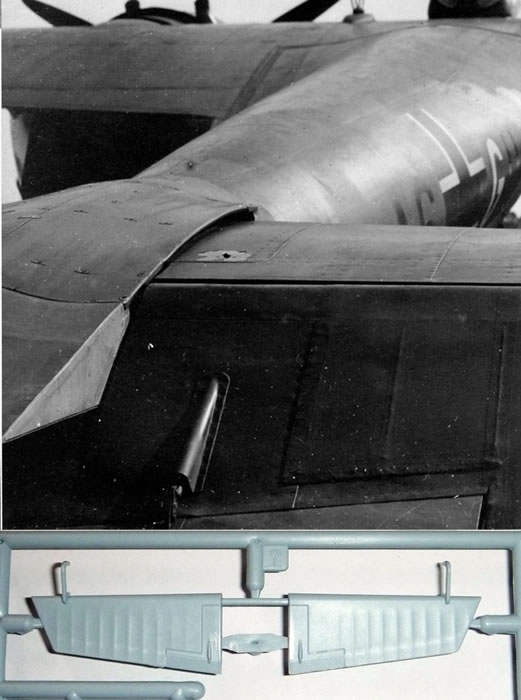
Now that we have covered off the surface treatment normal review service can return by focusing on the cockpit.
There is moulded detail on the cockpit sidewalls, to which are added equipment consoles, machinegun magazines, and structural members. The seats are nicely done and incorporate webbing bases where appropriate, and delicate framing on the rear gunner’s seat. The instrument panel relies on decaled instrument faces, but I think that this will be effective enough. The ventral crew entrance hatch can be modelled open, which both adds interest and allows more light into the cockpit. Six finely moulded machine guns cap things off.
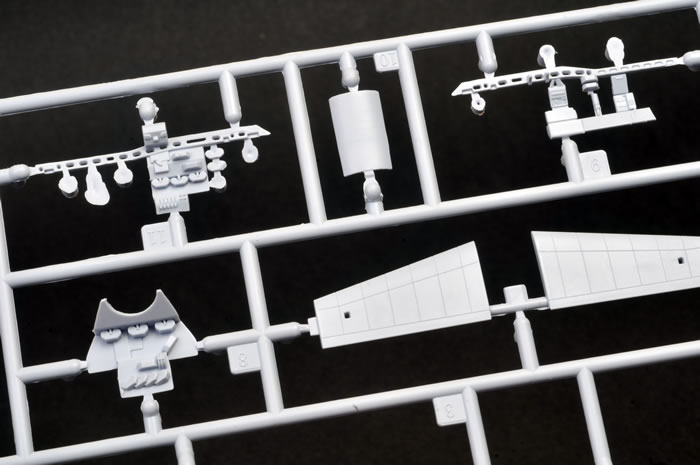
The quantity detail is quite frankly excellent for the scale, but some seat harnesses are required for best appearance. I would rate it amongst the best detailed multi-crew cockpit I can recall in a 1/72 scale kit, rivalled only by with Revell’s new-tool Ju 88. There are some understandable concessions to moulding limitations (e.g. simplified rudder pedals), but it captures the key features of a Do17 Z’s busy cockpit very well.
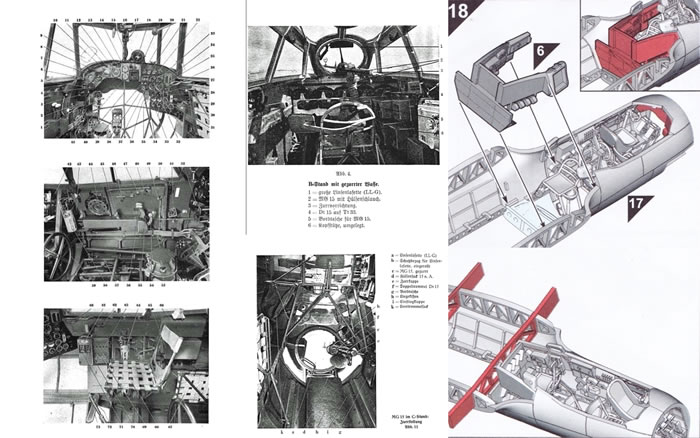
Various aftermarket companies will proffer PE and resin detail sets offering enhanced detail levels, but I suspect most will be content with adding seat harnesses; as a well painted the kit interior should look most convincing. Four rather good crew figures are provided in two slightly different styles with a separate arm each. Whilst not quite as good as those in Zvezda’s Pe-8 kits (the best 1/72 kit WW2 crewmen I can think of), they are an improvement on Airfix’s usual aircrew figure; and are a welcome inclusion for those who like to man their models.
The cockpit glazing is beautifully rendered, with a nice touch being the inclusion of structural detail in the ventral gunner’s canopy.
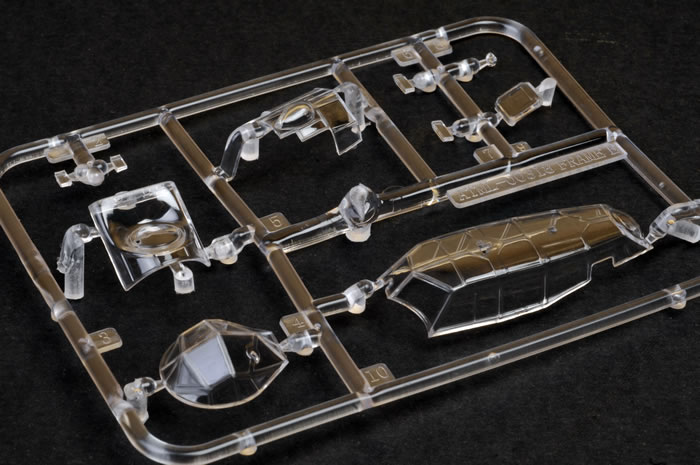
Internal fuselage detail is not just restricted to the cockpit, as there is a very well detailed bomb-bay as well. This has structural members moulded on the sidewalls, including the wing-rib framing, and a bomb-bay roof formed by the inside of the wing. There are also trusses representing the wing-spar carry through structure, plus a hand wheel and bomb-racks.
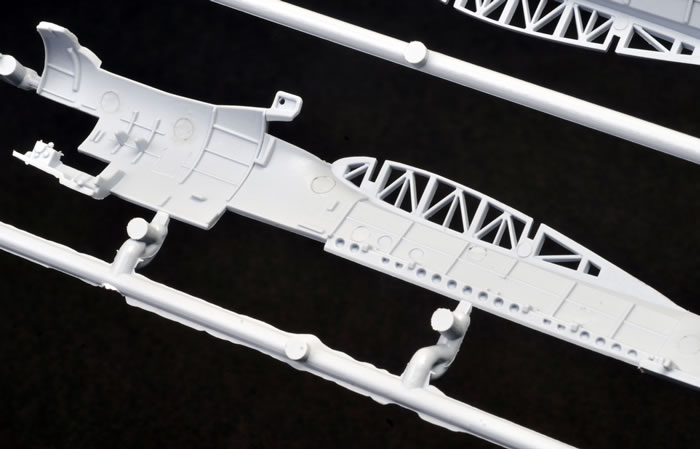
Four choices of bomb-bay configuration are offered, with both full loads of 20x50kg or 2x500kg bombs, or with half-loads of these and an auxiliary fuel tank. Of course, the bomb-doors can be modelled closed, using a separate closed piece to ensure a good fit, but I doubt many will choose to do so. Again, this is definitely one of the best bomb-bays I can recall in this scale.
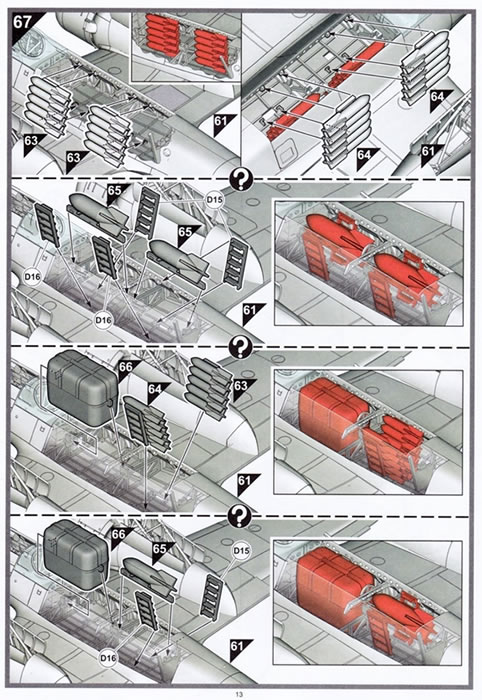
So there is quite a bit to enclose within the fuselage halves then. Despite this, it all looks pretty straightforward
Airfix set the bar fairly high for themselves with the amount of internal detail in the fuselage, so I am pleased to report that they did not stop when it came to the wings, and engine nacelles. The wings include detailed flap interiors with the option of modelling these surfaces deployed, along with separate ailerons. The nacelles include plenty of convincing wheel-well structure, and very nice firewall detail. The main undercarriage is also most convincing and delicately moulded where necessary, with slightly weighted tyres. A plus with Airfix is the provision of separate and correctly fitting closed wheel doors for modelling in-flight option.
The tailplane has separate rudders and elevator, but the elevator includes its actuators that are fixed for the surface in a neutral position, so to model it displaced will need some adjustment of these.

The engines are also superbly done, with nicely rendered cylinders, separate intake and exhaust manifolds, plus the prominent cowling stays. All are enclosed in realistic multi-piece cowlings, and are capped off convincingly fine props and spinners. If only all radial engine set-ups were this well represented in kit form...

Surprisingly, Airfix seem to have missed the “towel-rail” antennae (for blind approaches I think) on the ventral rear fuselage. But this is fairly easy to remedy. Overall the kit appears very accurate in appearance to me, and a very worthy representative of this quite elegant design.
Some care will be needed in assembly given all of the detail provided, but it looks as though it should be a fairly trouble-free build. This seems to have been the experience of Paul Higgins who posted his account of building the kit here on HyperScale in the "Airfix, Frog and Matchbox - Classic British Kits" group build forum.
The same kit is available along with the new-tool Airfix 1/72 BP Defiant in a “Dogfight Double” boxing.
Colours & Markings
The kit has two markings options:
- 8./Kampfgeschwader 77, Laon/Couvron, Northern France, July 1940.
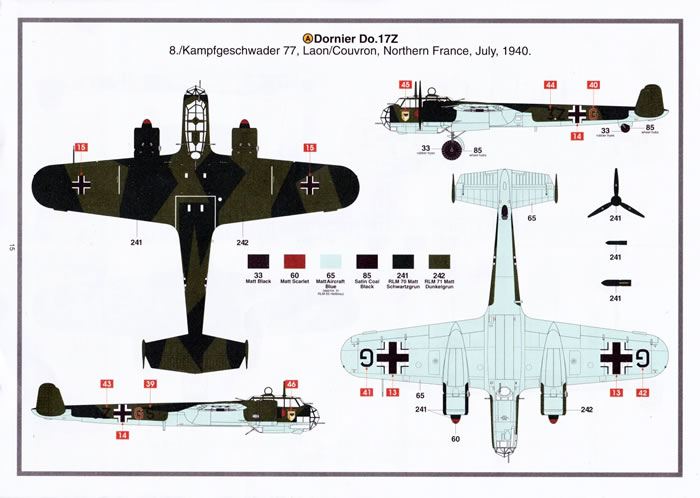
- 15. (Kroatische)/Kampfgeschwader 53, Eastern Front 1941.
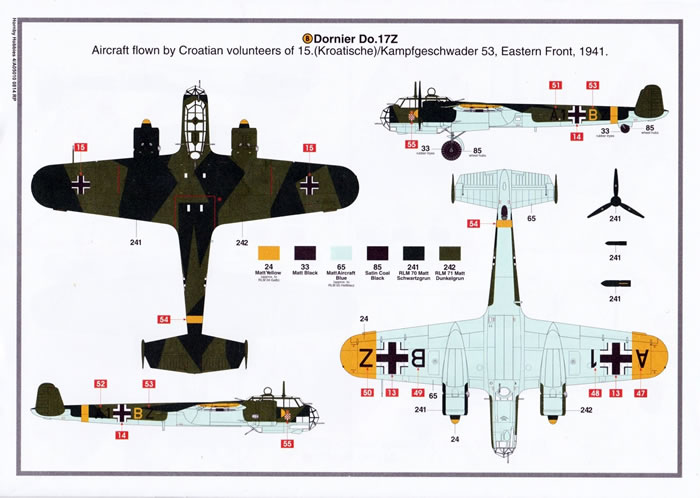
Check out this Xtradecal Do 17 Z sheet for eleven other schemes if the kit options do not appeal.
Finally, after a 47 year wait, we have a worthy Do 17 Z kit in The One True Scale! The need was so dire that most would have been happy with a kit half as good as this one so long as it was accurate.
As things stand, Airfix have raised the bar in many ways with the level of internal detail provided, not just in the cockpit, but within the bomb-bay, wheel-wells and engine cowls too. None of the internal detail provided is superfluous; I just wish more kit companies would attain the standard Airfix have demonstrated here.
Most important is the overall external appearance, and to my eyes Airfix have nailed it shape-wise. I think they have done an admirable job capturing the Do 17 Z’s rather elegant lines.
Also to their credit, Airfix have catered for an easily achieved in-flight option with specific parts for closed wheel and bomb-bay doors, plus of course some nicely rendered crew figures. But I wager that most models will be finished landed, with open bomb-doors, drooped flaps, open crew hatch, and perhaps displaced control surfaces.
Surface detail is quite acceptable, but remains the area Airfix have the greatest opportunity to improve in if they are to match the more refined levels achieved by some competitors. (To be fair, they essentially equal Revel’s and beat Italeri’s latest offerings in this regard, which after all are the two companies I suspect Airfix sees as its most direct rivals).
The kit should build well I think, but it will need the odd trim and slick of filler here and there, so don’t expect Tamiya levels of precision.
This is a superb effort by Airfix, it is accurate, refined, very detailed, with plenty of construction options, and excellent decals; all for a great price. When it comes to overall package value this kit, like many of Airfix’s recent releases, is hard to beat. ICM have a real challenge to equal or better this kit with their newly announced Do 17 Z tooling.
I cannot recommend this kit highly enough, nor wait for Airfix’s new-tool Whitley and Shackeltons, plus the other 1/72 kits announced recently.
Purchased online by HyperScale from Hannants
Review Text Copyright © 2015 by Mark Davies
Kit Contents Images Copyright © 2015 by Brett Green
Page Created 18 February, 2015
Last updated
19 February, 2015
Back to HyperScale Main Page
Back to Reviews Page

|
